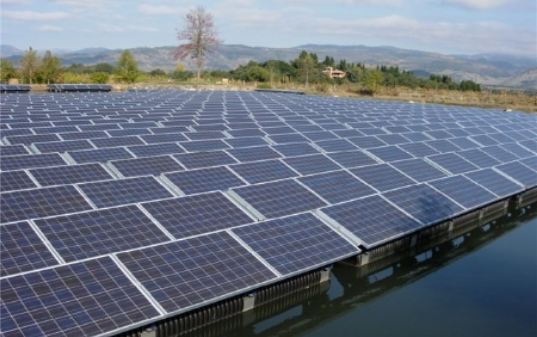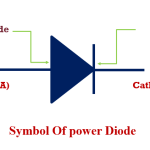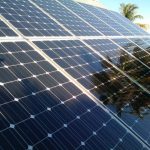Bypass Diodes
It is necessary to add the additional components to bypass or circumvent the shaded or damaged parts of PV (photovoltaic) cells, to continue the producing of power usually. These additional components which allow the flow of current through PV cells when the cells are not able to produce power can be termed as bypass diodes.
These diodes are necessary because a small damage or any disturbance in the PV module may affect the output current substantially. The effect in output current may be due to the cells in the module which are connected in series fashion, a single PV cell with some shade and due to the modules in a string can stop producing the power.
Bypass diodes are quite similar to the diodes that are used in the solar cells where the bypass diodes allow greater amount of current to pass through them with a very little amount of losses in them. In general, bypass diodes are arranged in reverse bias between the positive and negative output terminals of the solar cells and has no effect on its output. Preferably there will be one bypass diode for each and every solar cell, but this is more expensive, so that there is one diode per small group of series connected solar cells. They are normally connected along with the several solar cells where no current is allowed to pass through them in the case when all the cells are in use without any shading. The bypass diodes are helpful in the special cases when the cells are unable to pass the current through them. This type of bypass diode connection prevents the loss of power which allows the solar group to handle the real – world problems more efficiently.

Consider the above connection, if one of the connected panels is shaded for some reason. The panel will not produce any amount of significant power and the panel will also have a higher resistance which blocks the power flowing of the unshaded panel. Then the bypass diodes came into existence as shown in the diagram.

Consider if one of the panels is shaded in the above diagram, then the current of the unshaded panel flows through the bypass diode to avoid the higher resistance and current blocking of the shaded panel. Bypass diodes are useless, unless the panels are connected in a series fashion to produce high voltage. Recently, some solar panels are being manufactured by the cells divided into groups with a built in bypass diode in that group. Solar modules with bypass diodes are manufactured because of two reasons. Primarily, the bypass diode improves the overall system performance of the solar module. The second reason is that they can provide a greater amount of product safety. Under standard test conditions solar modules consistently can produce a maximum voltage of nearly 0.5 Vdc. The standard cell configuration of a solar module has 72 cells connected in a series fashion to produce an operating voltage somewhere nearly around 36 Vdc. Typically, a bypass diode is connected in parallel with every 24 cells in a 72 – cell solar module.


